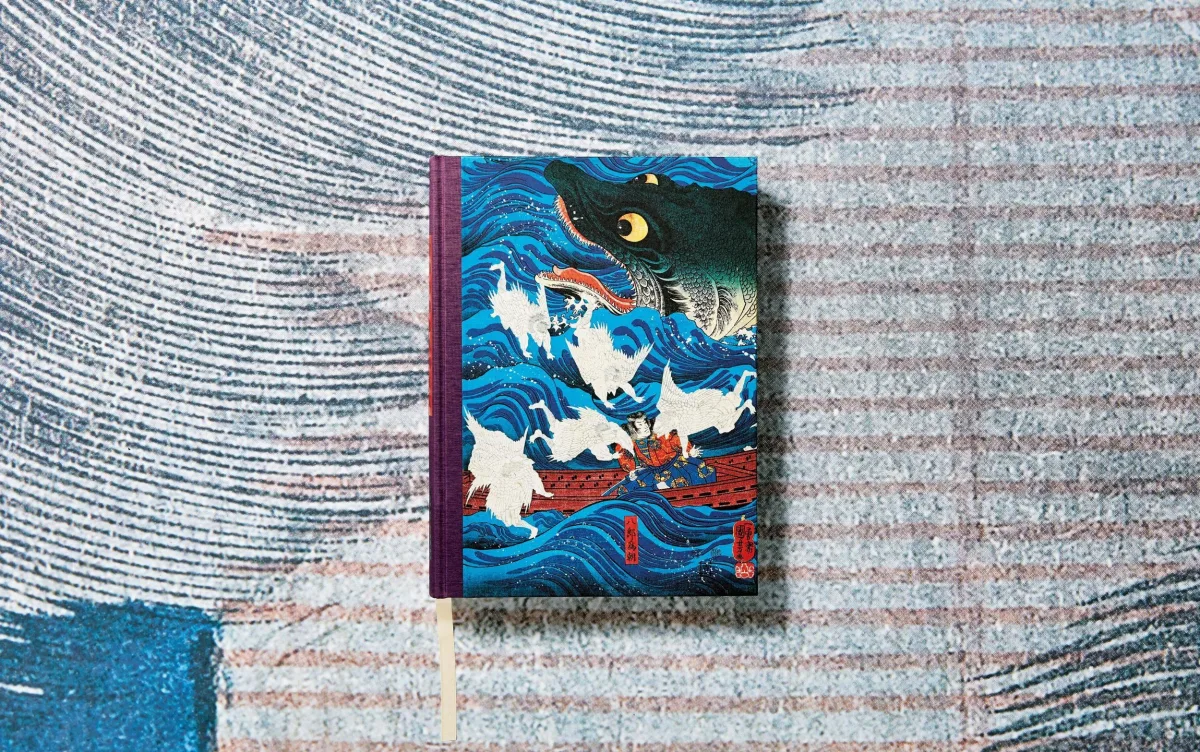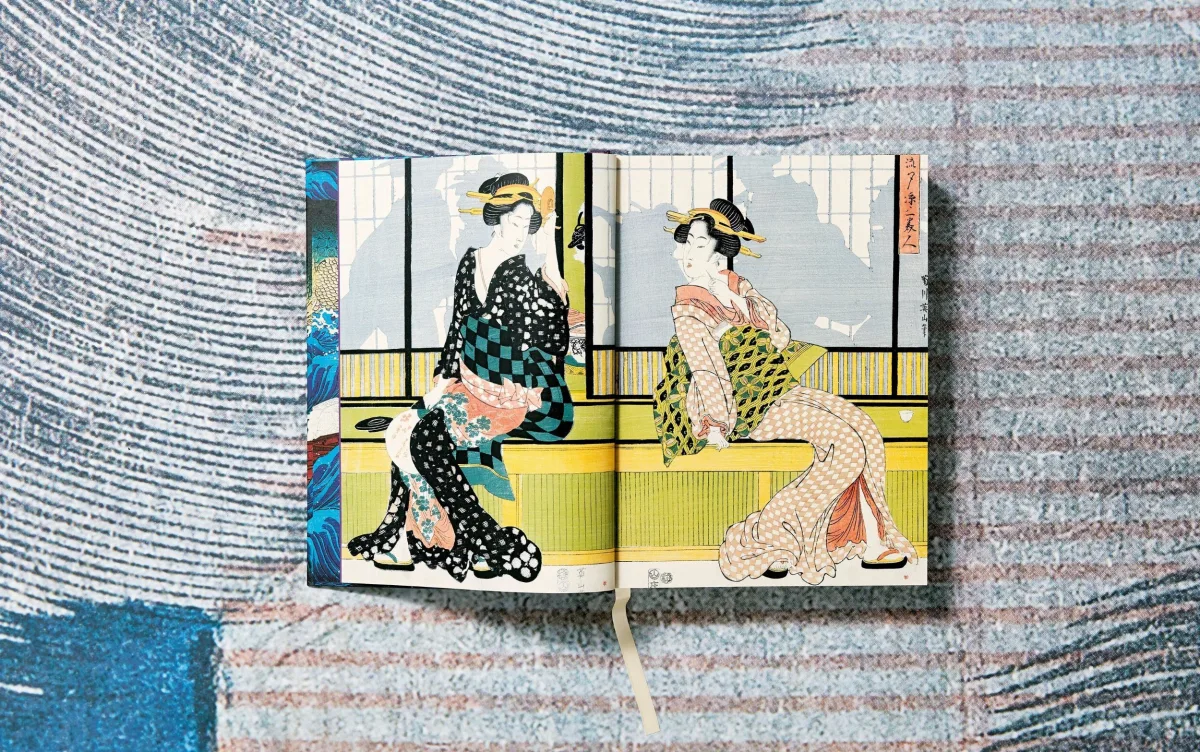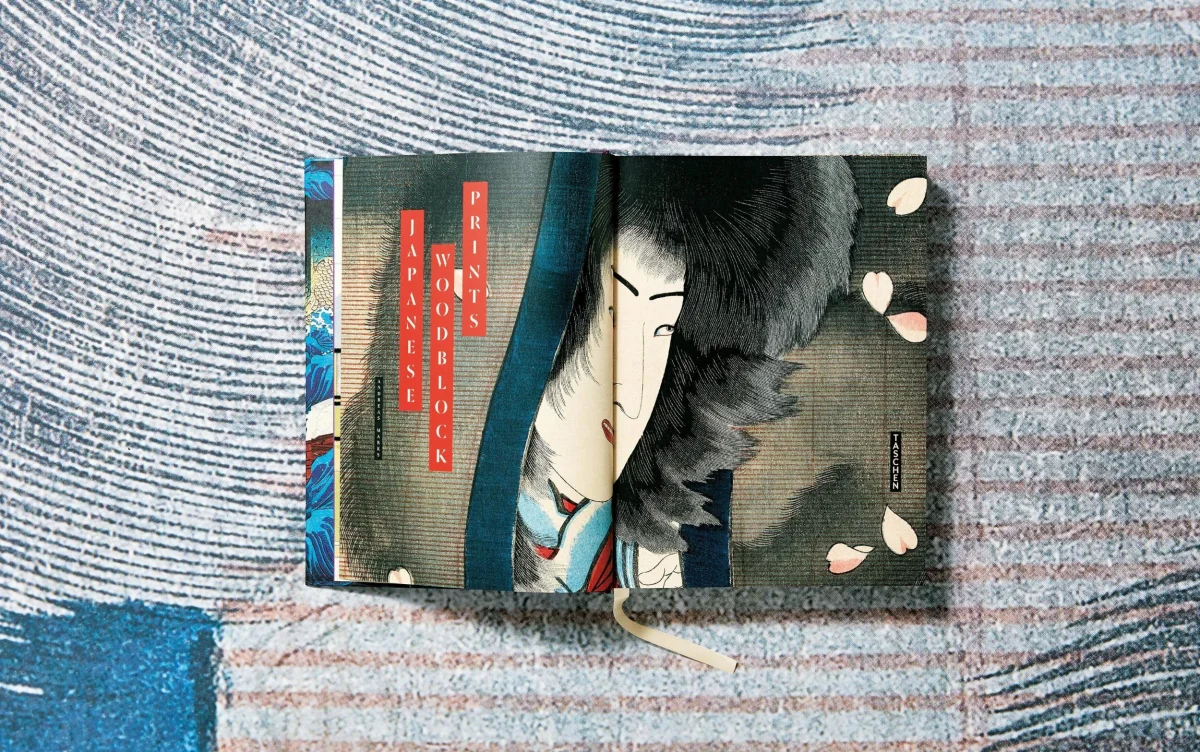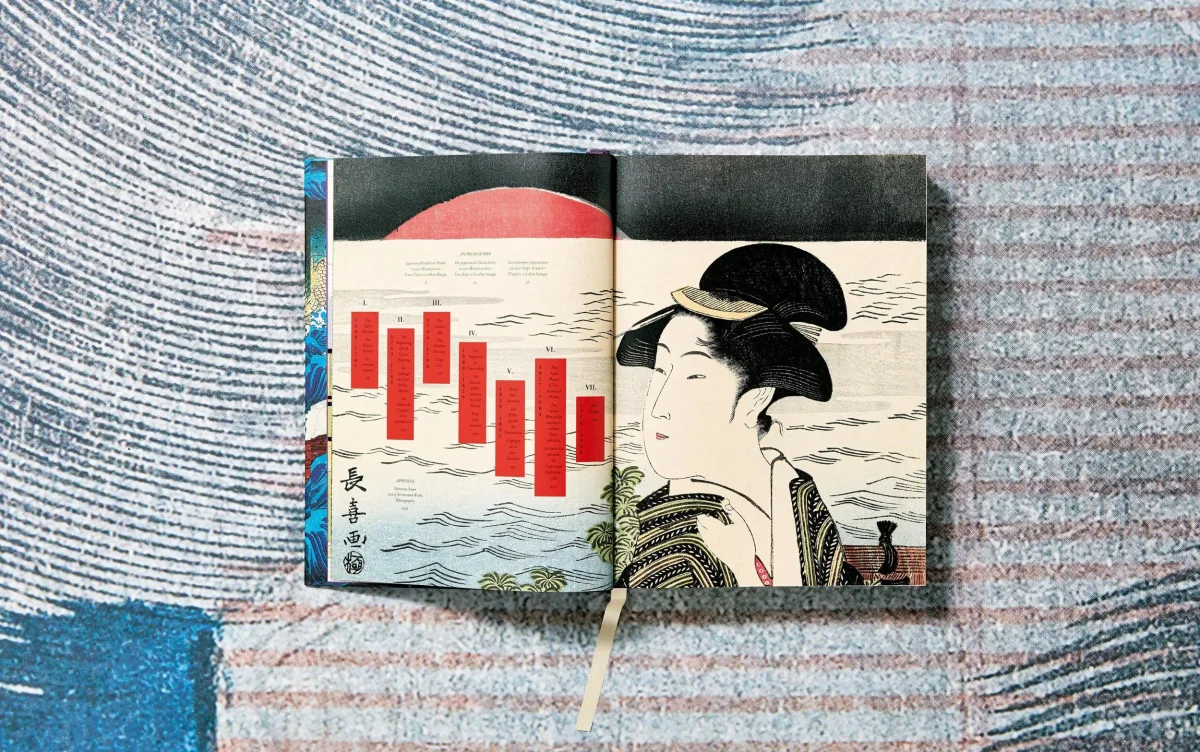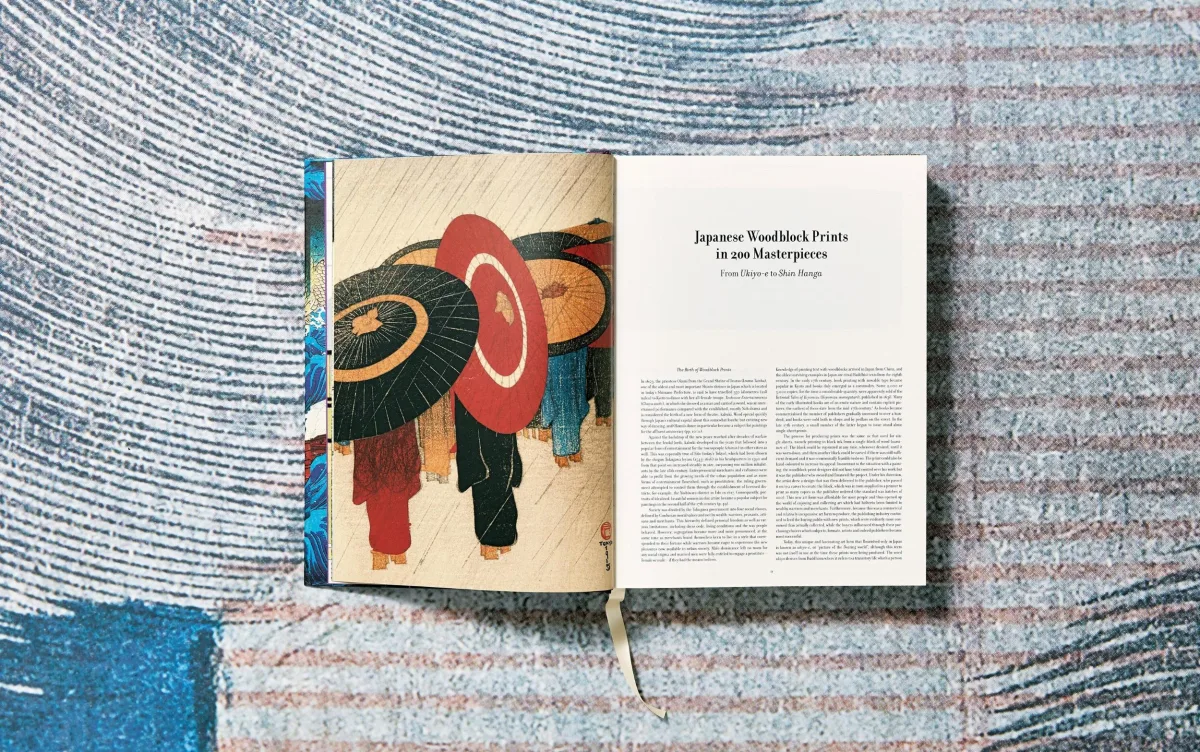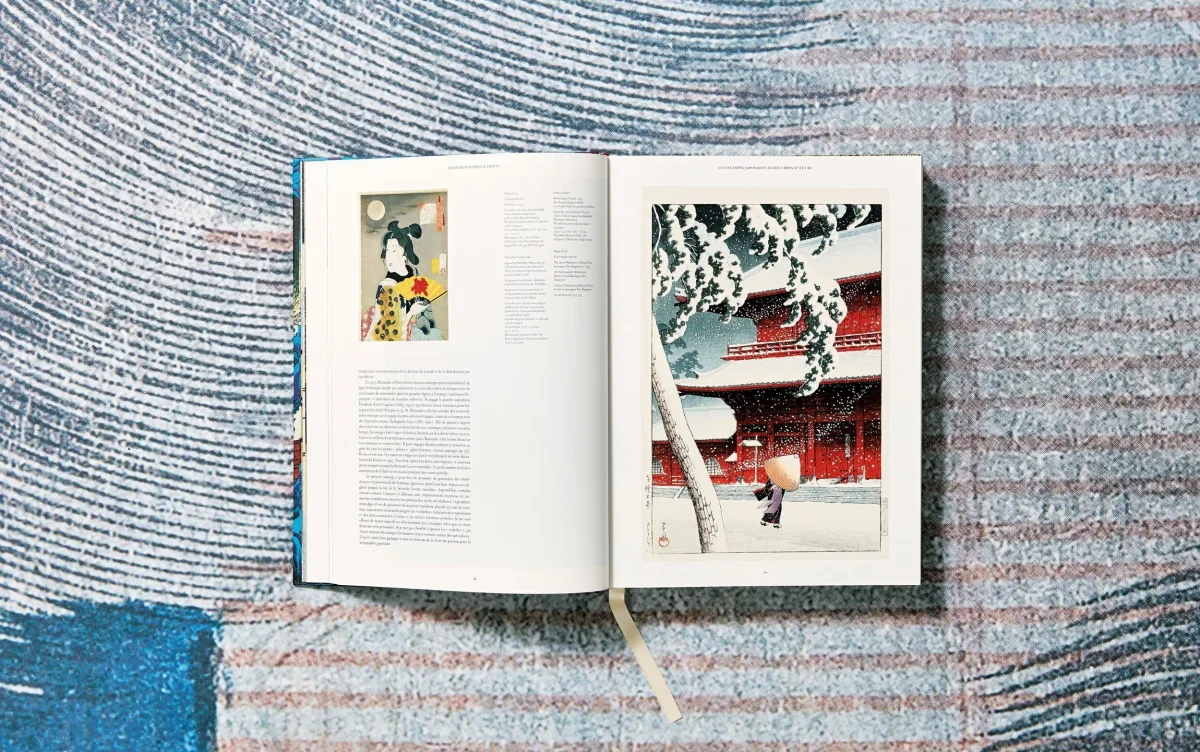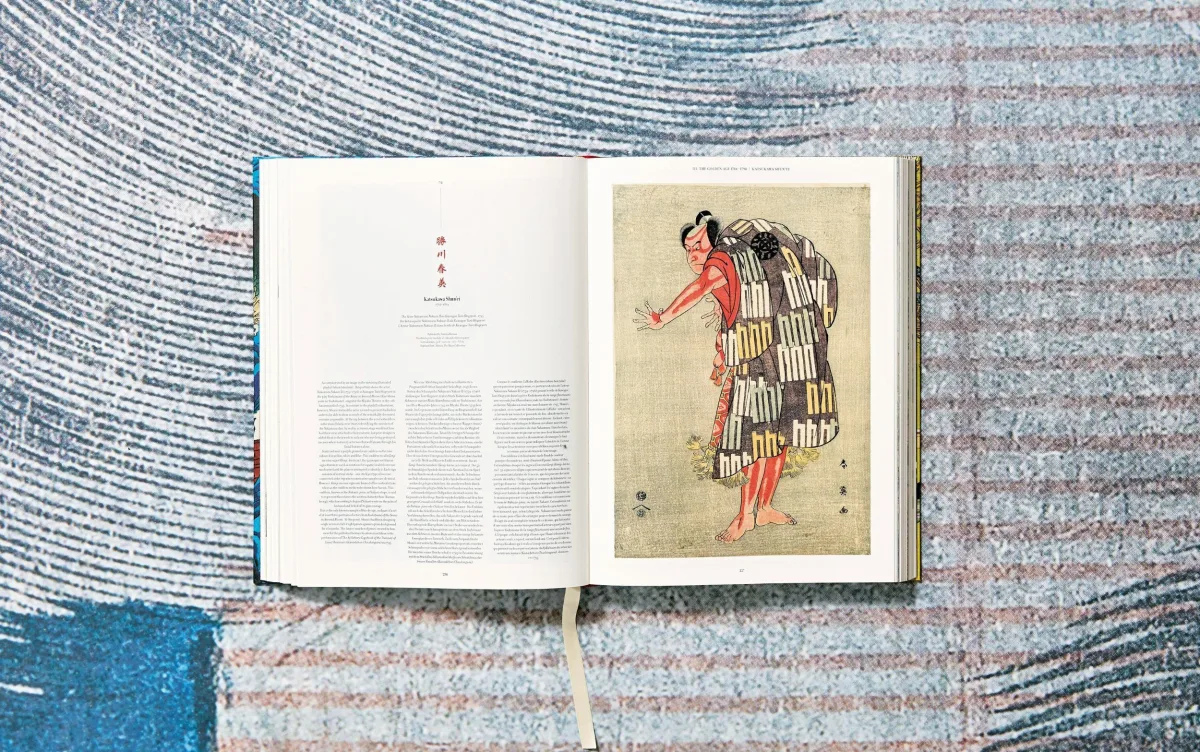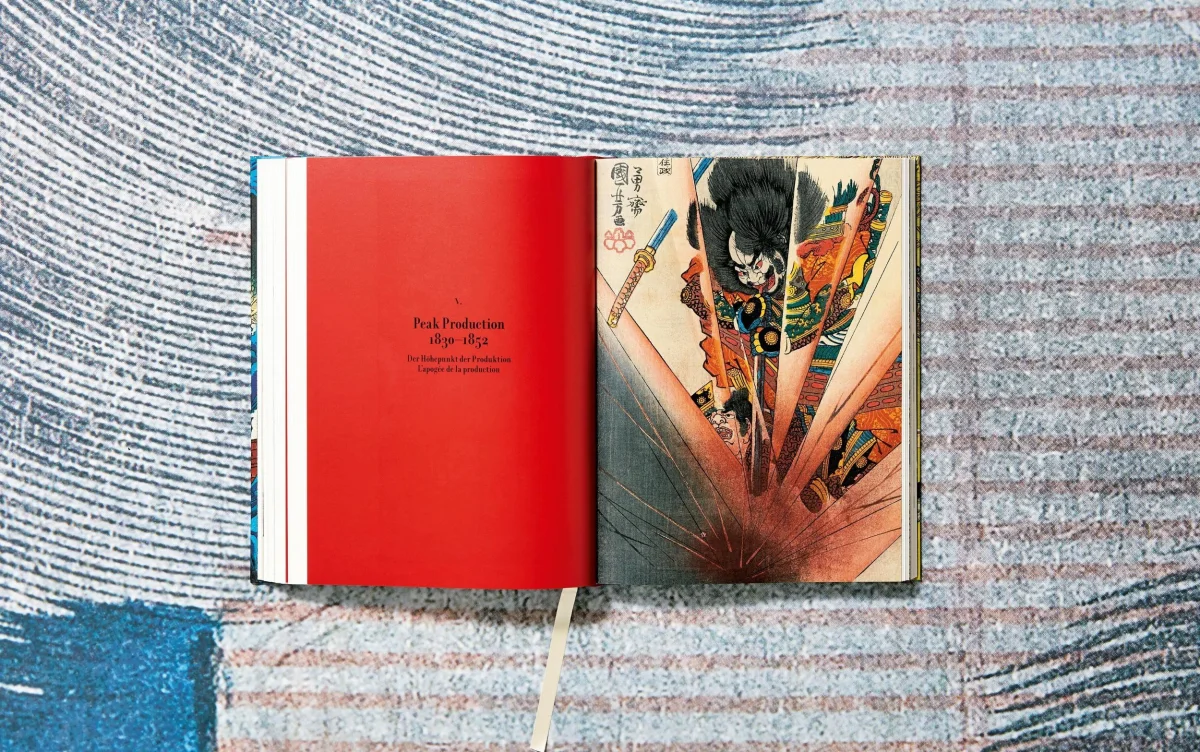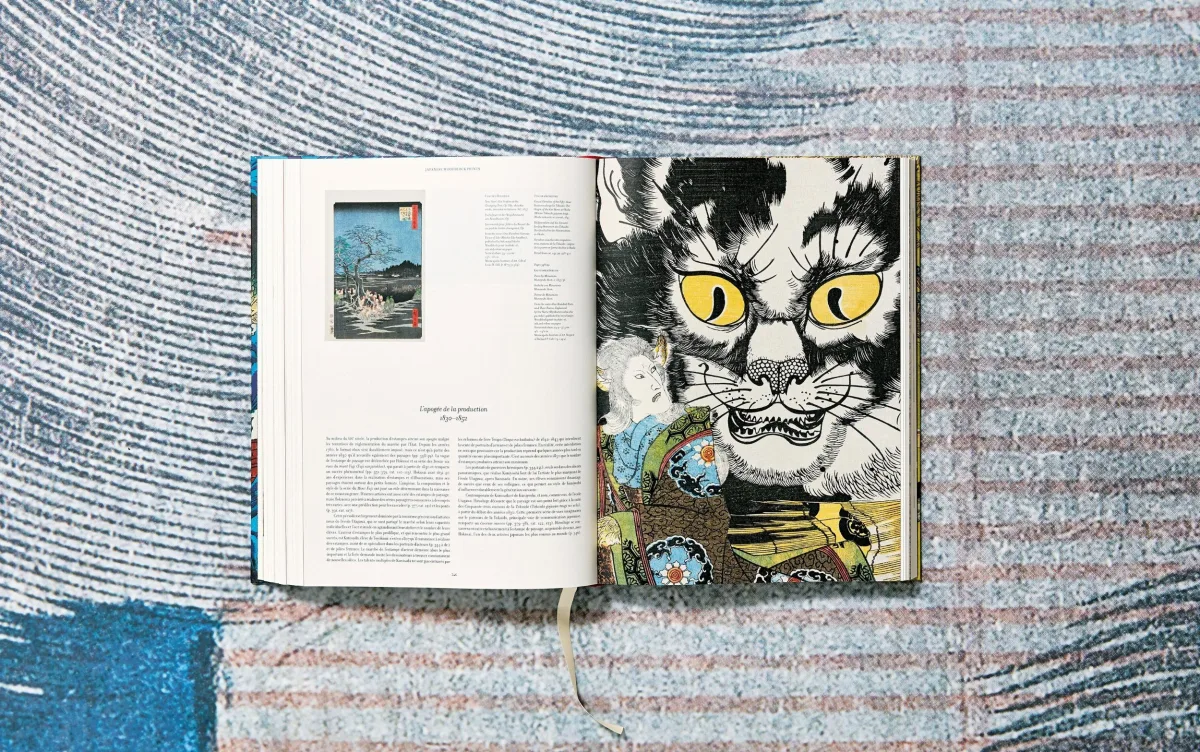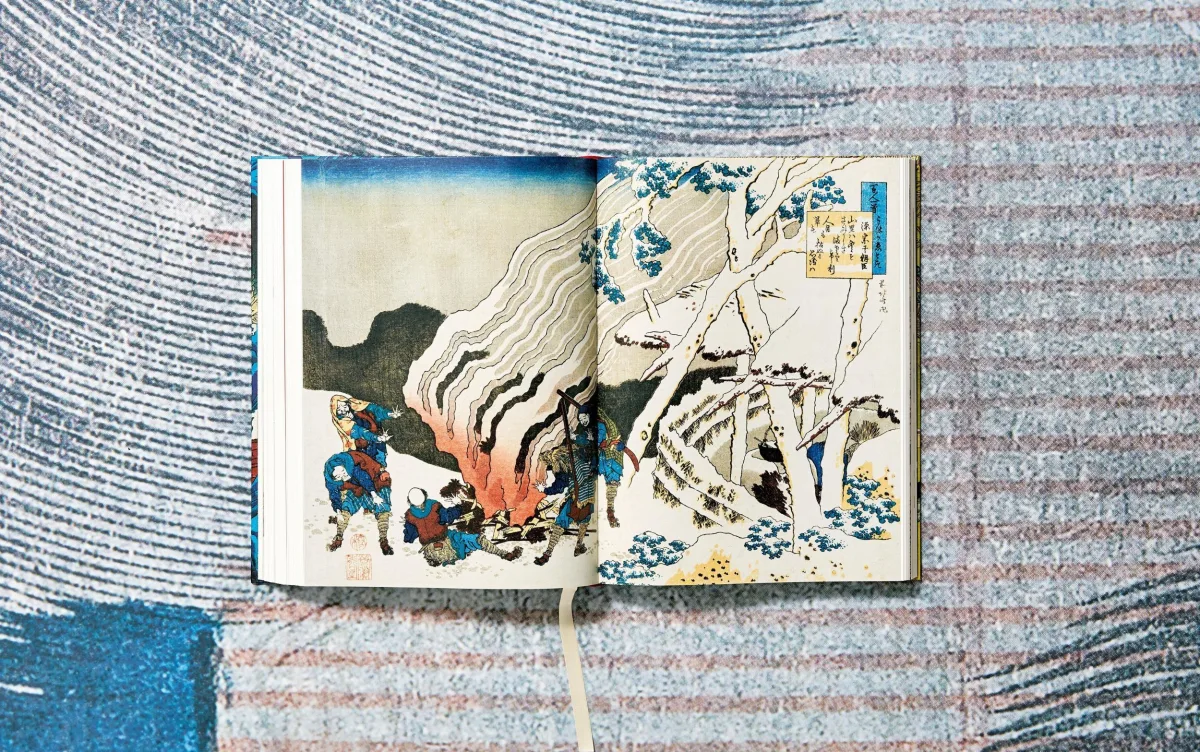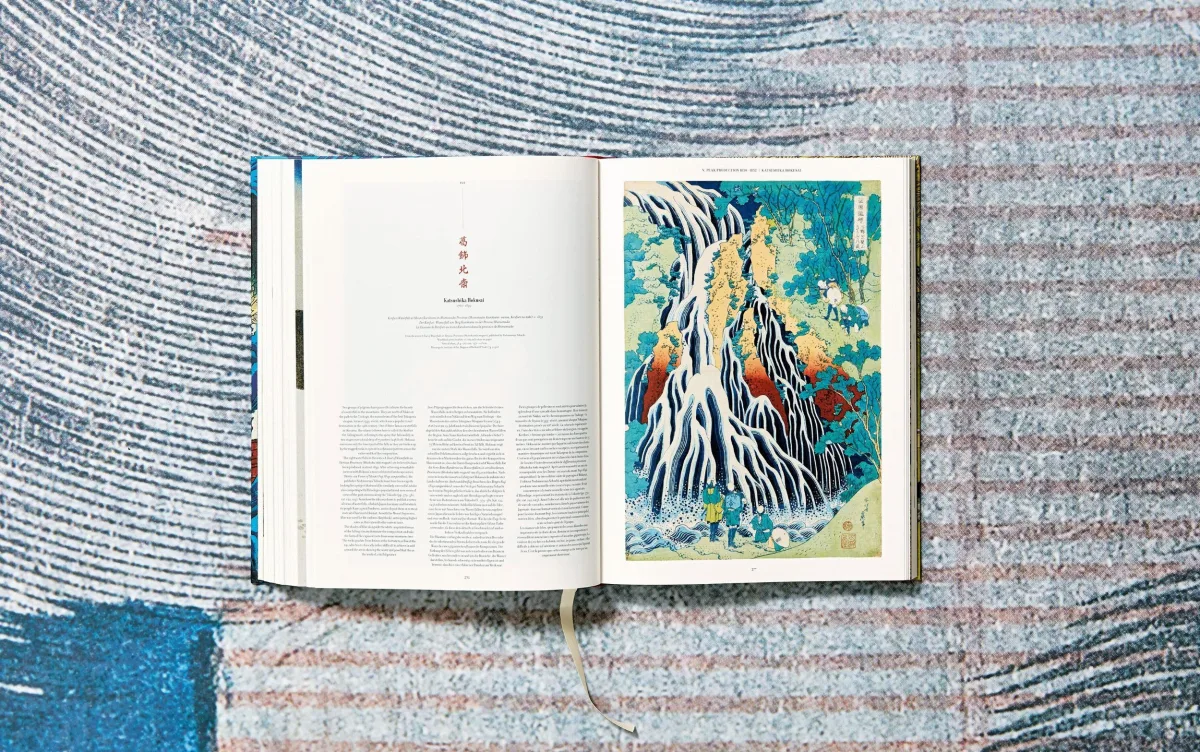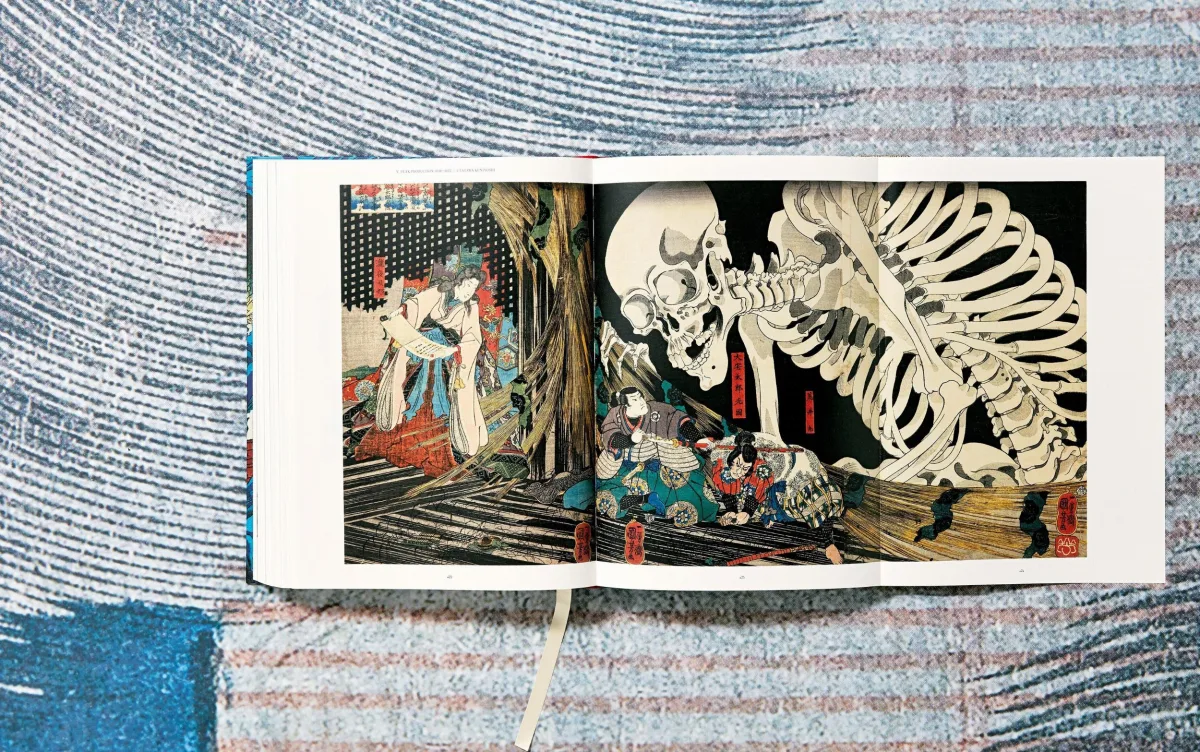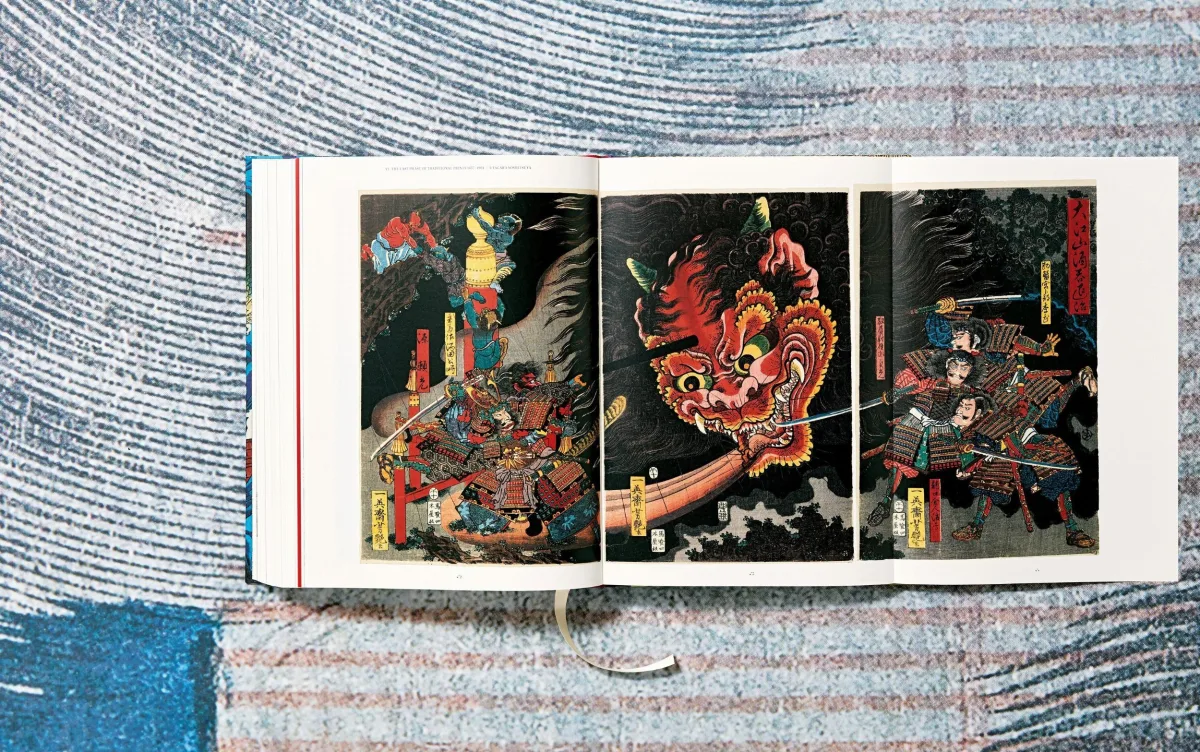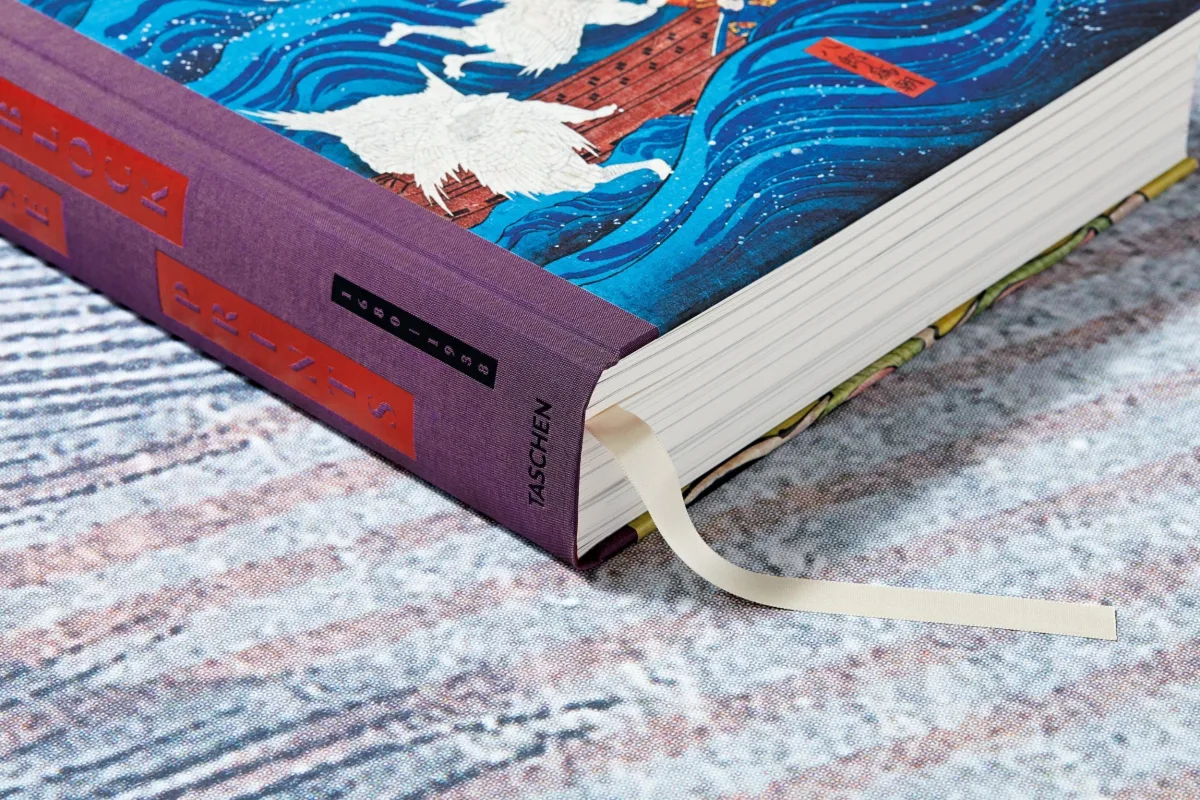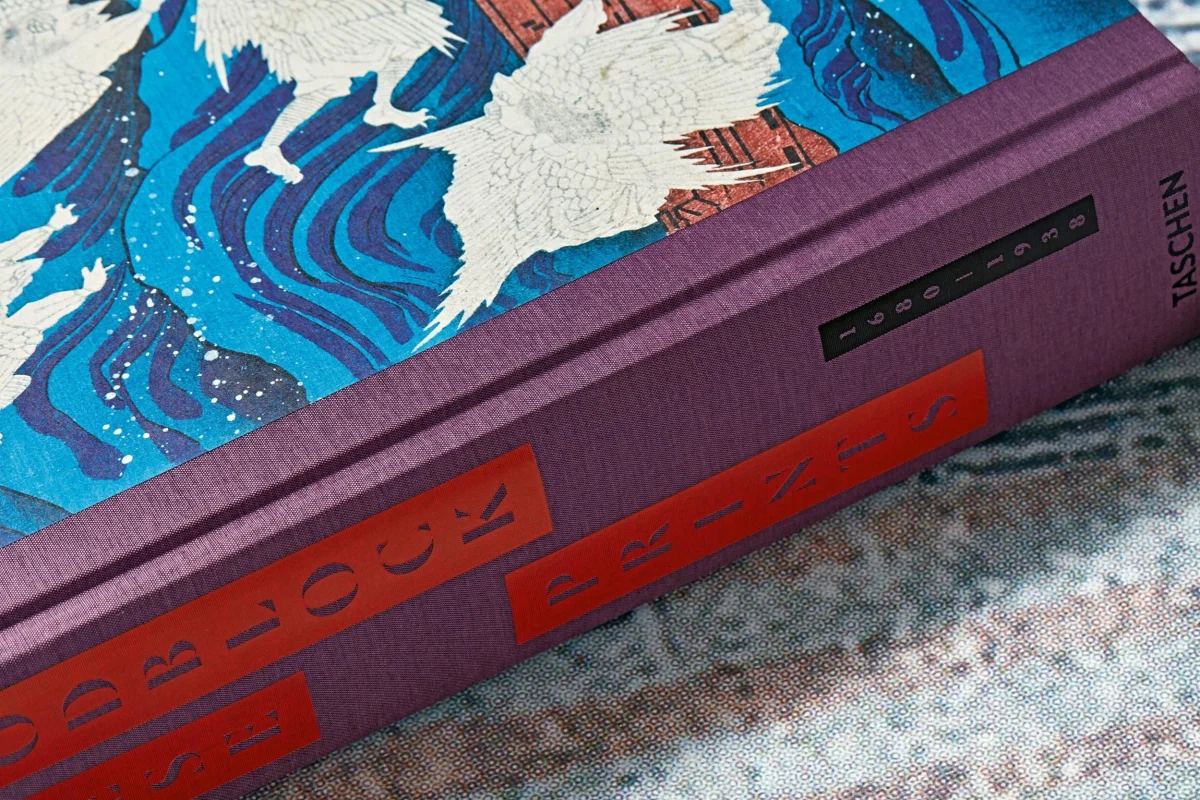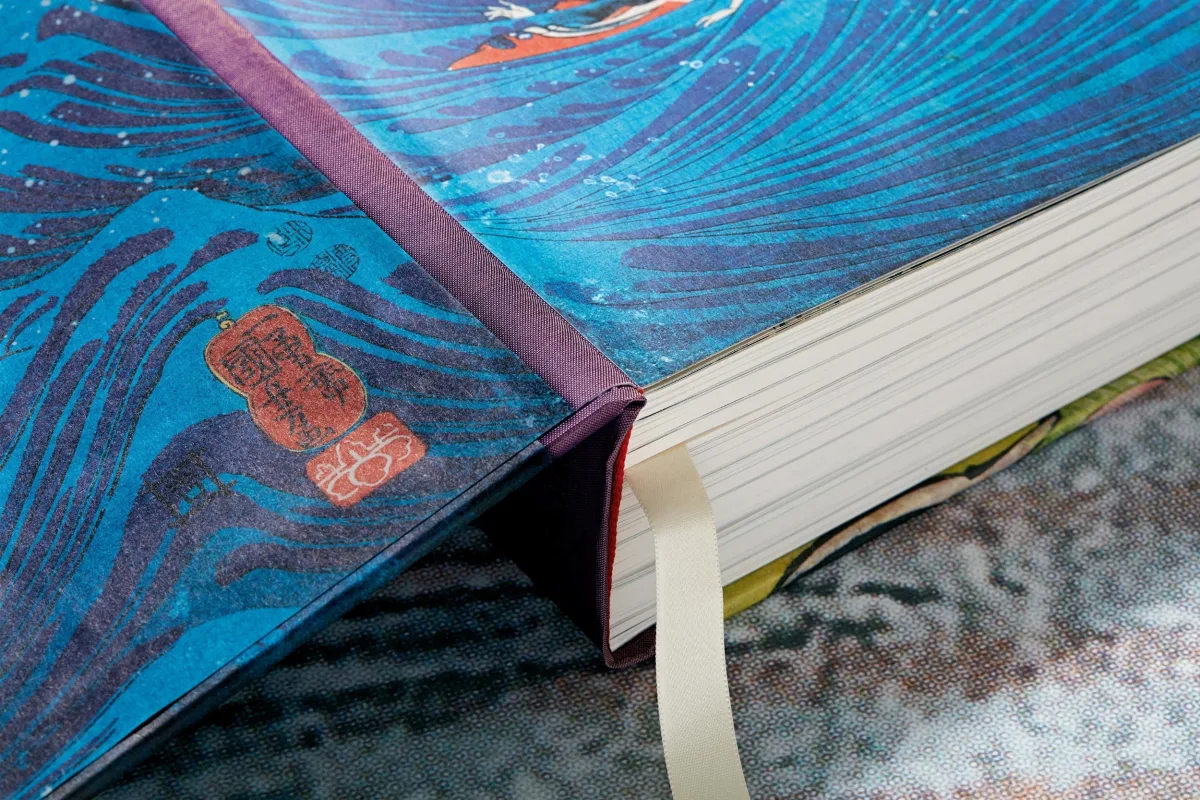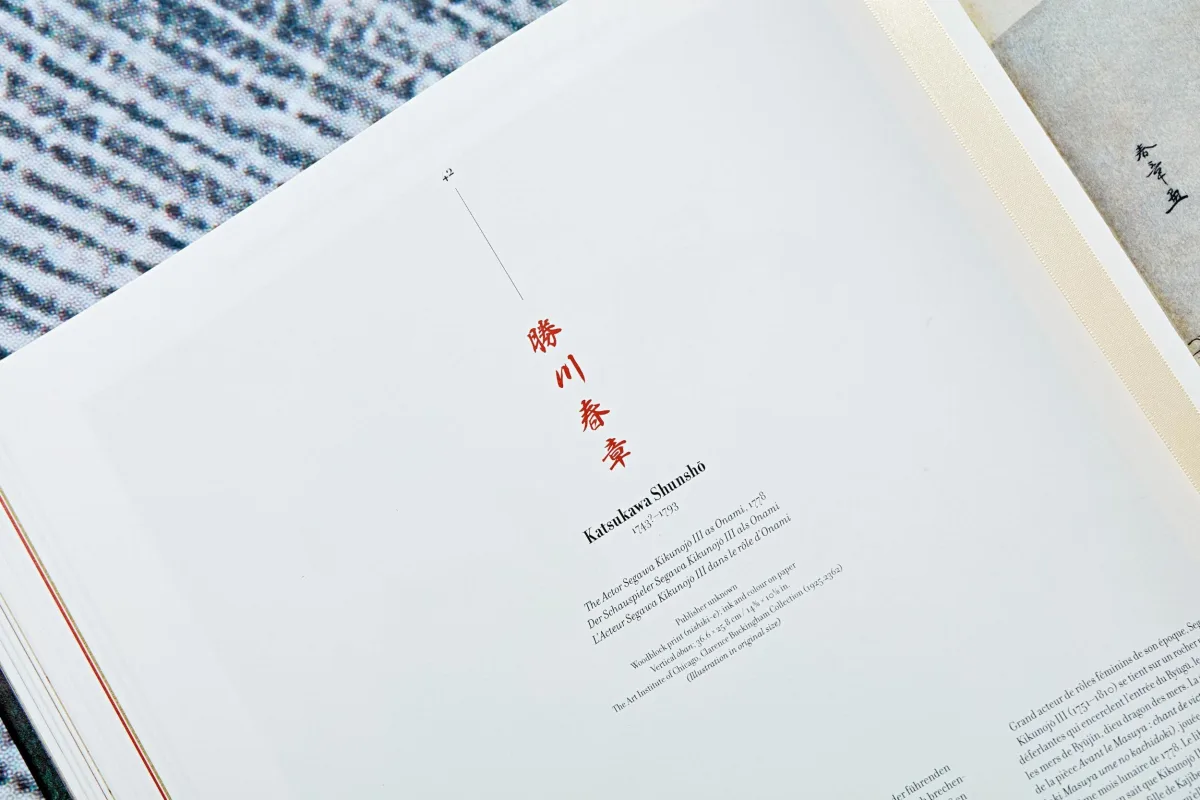1 / 19
XXL
I libri XXL misurano almeno 39 cm.
Japanese Woodblock Prints
200Edizione: Multilingue (Francese, Inglese, Tedesco)Disponibilità: DisponibileLa stampa xilografica giapponese è un fenomeno che non ha equivalenti in Occidente. Paesaggi mozzafiato si affiancano a un erotismo imbarazzante, fantasmi e demoni tormentano i vivi e i lottatori di sumo e gli attori kabuki sono delle rock star. Questa edizione XXL svela le 200 stampe più eccezionali del periodo 1680-1938, presentando le migliori immagini conservate nei musei e nelle collezioni private di tutto il mondo.
Hardcover, with ribbon bookmark, 29.0 x 39.5 cm (11.4 x 15.6 in), 5.80 kg (12.78 lb), 622 pages with 17 fold-outs
XXL
I libri XXL misurano almeno 39 cm.

Japanese Woodblock Prints
200Woodblock Wonders
A visual history of 200 Japanese masterpieces
From Edouard Manet’s portrait of naturalist writer Émile Zola sitting among his Japanese art finds to Van Gogh’s meticulous copies of the Hiroshige prints he devotedly collected, 19th-century pioneers of European modernism made no secret of their love of Japanese art. In all its sensuality, freedom, and effervescence, the woodblock print is single-handedly credited with the wave of japonaiserie that first enthralled France and, later, all of Europe—but often remains misunderstood as an “exotic” artifact that helped inspire Western creativity.
The fact is that the Japanese woodblock print is a phenomenon of which there exists no Western equivalent. Some of the most disruptive ideas in modern art—including, as Karl Marx put it, that “all that is solid melts into air”—were invented in Japan in the 1700s and expressed like never before in the designs of such masters as Hokusai, Utamaro, and Hiroshige in the early 19th century.
This book lifts the veil on a much-loved but little-understood art form by presenting the 200 most exceptional Japanese woodblock prints in their historical context. Ranging from the 17th-century development of decadent ukiyo-e, or “pictures of the floating world,” to the decline and later resurgence of prints in the early 20th century, the images collected in this edition make up an unmatched record not only of a unique genre in art history, but also of the shifting mores and cultural development of Japan.
From mystical mountains to snowy passes, samurai swordsmen to sex workers in shop windows, each piece is explored as a work of art in its own right, revealing the stories and people behind the motifs. We discover the four pillars of the woodblock print—beauties, actors, landscapes, and bird-and-flower compositions—alongside depictions of sumo wrestlers, kabuki actors, or enticing courtesans—rock stars who populated the “floating world” and whose fan bases fueled the frenzied production of woodblock prints. We delve into the horrifying and the obscure in prints where demons, ghosts, man-eaters, and otherworldly creatures torment the living—stunning images that continue to influence Japanese manga, film, and video games to this day. We witness how, in their incredible breadth, from everyday scenes to erotica, the martial to the mythological, these works are united by the technical mastery and infallible eye of their creators and how, with tremendous ingenuity and tongue-in-cheek wit, publishers and artists alike fought to circumvent government censorship.
Three years in the making, this XXL edition presents reproductions of the finest extant impressions from the vaults of museums and private collections across the globe—many newly photographed especially for this project. Some 17 stunning fold-outs invite us to study even the subtlest details, while extensive descriptions guide us through this frantic period in Japanese art history.
Features:
The fact is that the Japanese woodblock print is a phenomenon of which there exists no Western equivalent. Some of the most disruptive ideas in modern art—including, as Karl Marx put it, that “all that is solid melts into air”—were invented in Japan in the 1700s and expressed like never before in the designs of such masters as Hokusai, Utamaro, and Hiroshige in the early 19th century.
This book lifts the veil on a much-loved but little-understood art form by presenting the 200 most exceptional Japanese woodblock prints in their historical context. Ranging from the 17th-century development of decadent ukiyo-e, or “pictures of the floating world,” to the decline and later resurgence of prints in the early 20th century, the images collected in this edition make up an unmatched record not only of a unique genre in art history, but also of the shifting mores and cultural development of Japan.
From mystical mountains to snowy passes, samurai swordsmen to sex workers in shop windows, each piece is explored as a work of art in its own right, revealing the stories and people behind the motifs. We discover the four pillars of the woodblock print—beauties, actors, landscapes, and bird-and-flower compositions—alongside depictions of sumo wrestlers, kabuki actors, or enticing courtesans—rock stars who populated the “floating world” and whose fan bases fueled the frenzied production of woodblock prints. We delve into the horrifying and the obscure in prints where demons, ghosts, man-eaters, and otherworldly creatures torment the living—stunning images that continue to influence Japanese manga, film, and video games to this day. We witness how, in their incredible breadth, from everyday scenes to erotica, the martial to the mythological, these works are united by the technical mastery and infallible eye of their creators and how, with tremendous ingenuity and tongue-in-cheek wit, publishers and artists alike fought to circumvent government censorship.
Three years in the making, this XXL edition presents reproductions of the finest extant impressions from the vaults of museums and private collections across the globe—many newly photographed especially for this project. Some 17 stunning fold-outs invite us to study even the subtlest details, while extensive descriptions guide us through this frantic period in Japanese art history.
Features:
- The work of 89 artists, from the world-renowned to the unfamiliar
- 7 chapters organized chronologically to trace the history of the medium from 1680 to 1938
- 17 fold-outs, hand-folded due to their size and specifications
- Exclusive reproductions from museums and private collections
- An appendix listing all artists and works
L'autore
Andreas Marks ha studiato storia dell’arte dell’Asia orientale all’Università di Bonn e ha conseguito il dottorato in studi giapponesi all’Università di Leida con una tesi sulle stampe del XIX secolo raffiguranti attori di kabuki. Dal 2008 al 2013 è stato direttore e capo curatore del Clark Center for Japanese Art di Hanford, California, e dal 2013 è responsabile della sezione dedicata all’arte giapponese e coreana della Mary Griggs Burke Collection, nonché direttore del Clark Center for Japanese Art presso il Minneapolis Institute of Art.
Japanese Woodblock Prints
Hardcover, with ribbon bookmark, 29.0 x 39.5 cm (11.4 x 15.6 in), 5.80 kg (12.78 lb), 622 pages with 17 fold-outsISBN 978-3-8365-6336-9
Edizione: Multilingue (Francese, Inglese, Tedesco)Scarica qui le immagini del prodotto
4.9
Wonderful and exquisite
16 agosto 2023
I’m almost speechless. The quality of this publication is incredible. So wonderful to have so many details about the pieces and the artists in three different languages and the large images are truly amazing.Japanese woodblock prints
30 giugno 2022
Très bienMuy recomendable
29 gennaio 2022
Gracias al tamaño de esta obra podemos introducirnos de manera espectacular dentro de algunas de las mejores impresiones del arte japonés.Ein Muss...
29 gennaio 2022
...für alle Fans japanischer Kunst und Kultur. Erstaunlich, welche Einflüsse diese alten Meister offensichtlich auf das japanische Gegenwartsdesign haben! Druck und Verarbeitung werden dem opulenten Inhalt gerecht, ein edles Stück Buchdruckerhandwerk.Sehr zu empfehlen, zum Eintauchen
27 dicembre 2021
Ein Prachtband, der in dieser XXL-Ausgabe eine Fülle von Meisterwerken, aber auch weniger bekannten, jedoch sehr interessanten Werken dieser einzigartigen Kunstform enthüllt. Auch der historische Hintergrund japanischer Holzschnitte wird sehr ausführlich erläutert.Beautiful!
12 novembre 2021
This beautiful book is of exquisite quality. Informative text accompanies large images.
